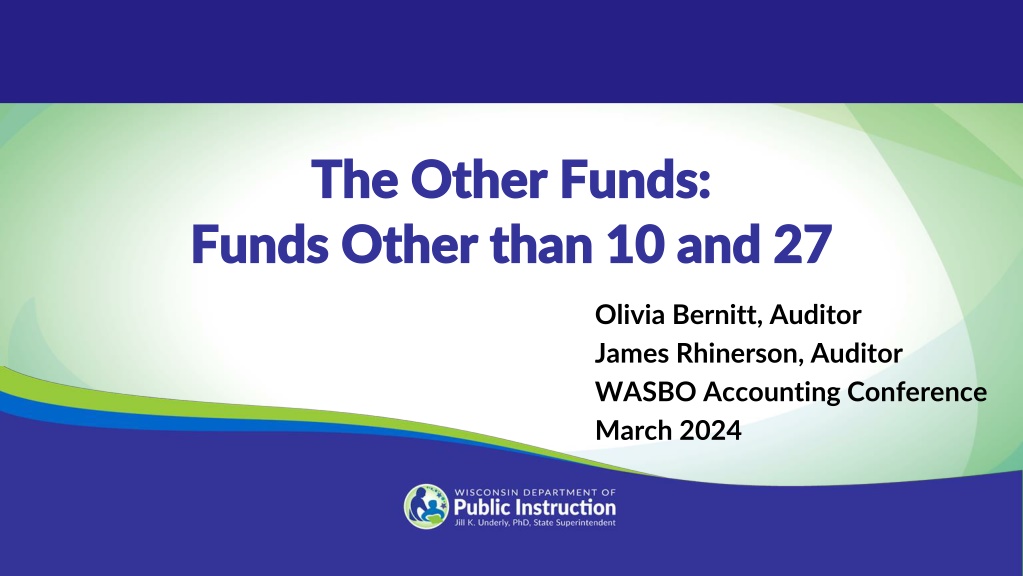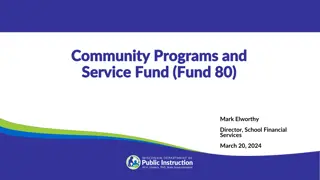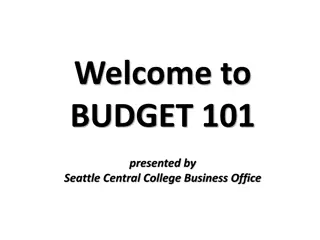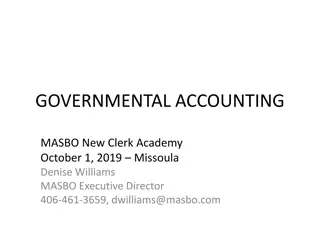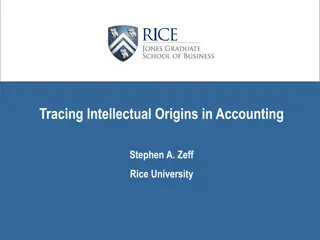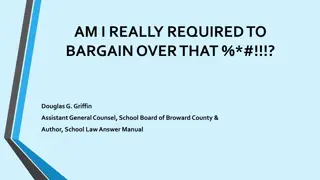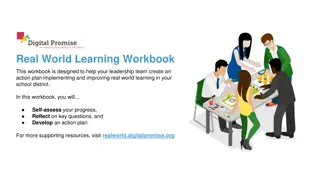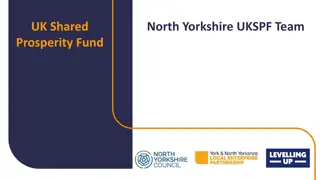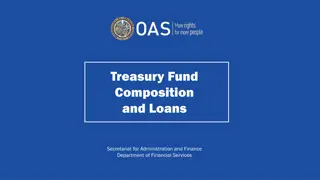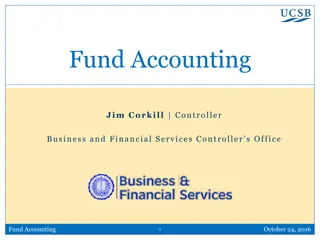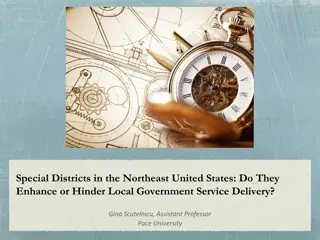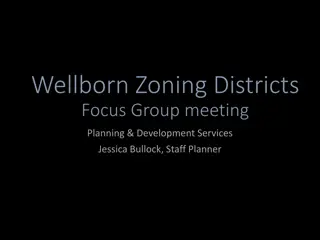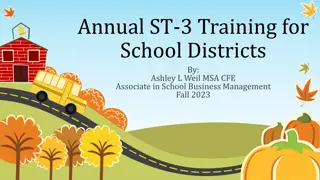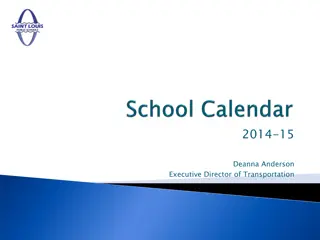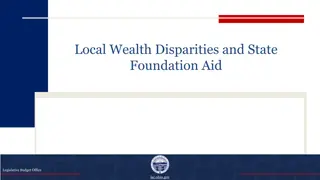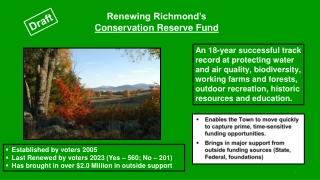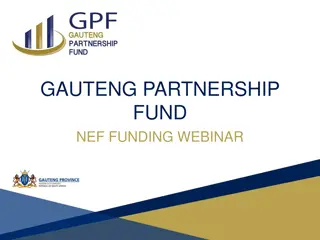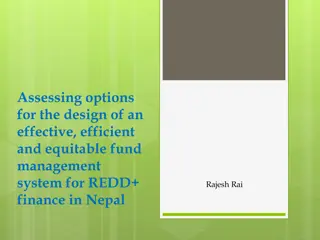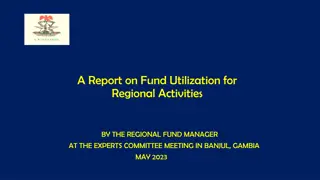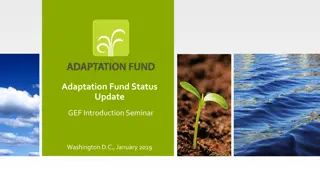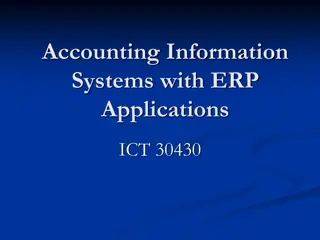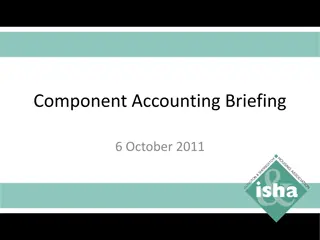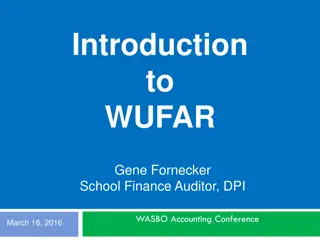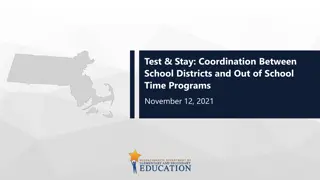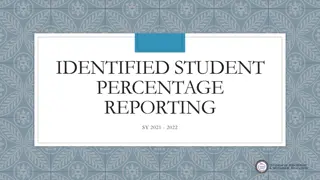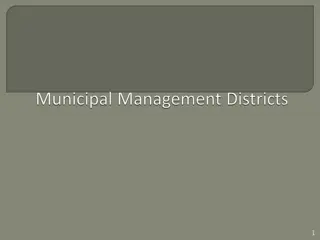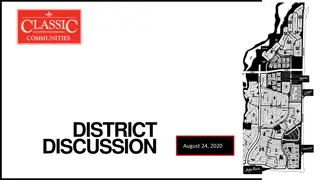Understanding Fund Accounting in School Districts
Explore the world of fund accounting in school districts through an in-depth look at different fund types, their definitions, and the regulations governing them. Learn about the unique characteristics of instructional funds, debt service funds, capital projects funds, food and community service funds, custodial funds, and trust funds as outlined in the WUFAR Fund Definitions. Uncover the role of each fund in maintaining financial transparency and accountability within educational institutions.
Download Presentation

Please find below an Image/Link to download the presentation.
The content on the website is provided AS IS for your information and personal use only. It may not be sold, licensed, or shared on other websites without obtaining consent from the author. Download presentation by click this link. If you encounter any issues during the download, it is possible that the publisher has removed the file from their server.
E N D
Presentation Transcript
The Other Funds: The Other Funds: Funds Other than 10 and 27 Funds Other than 10 and 27 Olivia Bernitt, Auditor James Rhinerson, Auditor WASBO Accounting Conference March 2024
GASB Fund Accounting GASB Fund Accounting General Fund 10 Change in Fund Balance Comm. Svc. Fund 80 Balance Sheet + Assets Cash Receivables + Revenues Taxes State Aids Change in Fund Balance Balance Sheet Food Service Fund 50 + Assets - Liabilities Debt Payables + Revenues Taxes State Aids - Expenditures Payroll Operations Cash Receivables Change in Fund Balance Balance Sheet - Liabilities Debt Payables = Fund Balance - Expenditures Payroll Operations = Net Change FB + Assets Cash Receivables + Revenues Taxes State Aids = Fund Balance = Net Change FB - Liabilities Debt Payables - Expenditures Payroll Operations = Fund Balance = Net Change FB
What is a Fund? What is a Fund? Independent fiscal and accounting entity Requiring its own set of books In accordance with special regulations, restrictions, and limitations that earmark each fund for a specific activity or for attaining certain objectives A general description of WUFAR Funds can be found on pages 5-1 to 5-5 in WUFAR Revision 2023-24
WUFAR Fund Definitions WUFAR Fund Definitions Instructional Funds: Elementary and secondary instruction (i.e. K - 12) activities Debt Service Funds: Transactions related to repayment of general obligation debt Capital Projects Funds: Accounts for capital project expenditures financed through general obligation debt or other fund specific sources. Food and Community Service Funds: Accounts for food and community service activities. Custodial Fund: Accounts for custodial activity, which is primarily related to pupil organizations, parent organizations, and certain scholarships pursuant to GASB 84. Trust Funds: Accounts for assets held by the district in a trustee capacity for individuals, private organizations, other governments and/or other funds.
WUFAR Fund Definitions WUFAR Fund Definitions Instructional Funds: 10, 21, 23, 27, 29, 91, 93, and 99 Debt Service Funds: 38 and 39 Capital Projects Funds: 41, 46, and 49 Food and Community Service Funds: 50 and 80 Custodial Fund: 60 Trust Funds: 72, 73, and 76
WUFAR Fund Definitions WUFAR Fund Definitions Governmental Funds Instructional Funds, Debt Service Funds, Capital Project Funds, Community Service Funds, Food Service Funds Proprietary Funds Food Service Funds Fiduciary Funds Custodial Funds and Trust Funds
Fund 21 Fund 21 Account for special revenue funds that can be used for district operations. Not a Trust Fund. Funds held in a trust should be in a Fiduciary Fund (Fund 72). May have a positive fund balance at year end. Cannot have negative fund balance at year end.
Fund 21 Fund 21 Mostly contributions from gifts and donations from private sources for which no repayment or special service is expected. May include student or other groups activities that no longer meet the definition of fiduciary. Must be expended pursuant to donor restrictions or board commitments.
Private Contributions Private Contributions Record in Fund 21 when the expenditures will not occur in the same year as the revenue. Fund 21 activity is excluded from the shared costs calculation. Record in Fund 10 when all of the expenditures will occur in the same year as the revenue. Should be recorded in funds 27, 29, 38, 39, 49, 50, 72, 80, 99 if the contribution relates to the purpose of that fund.
Fund 38 and Fund 39 Fund 38 and Fund 39 Transactions related to repayment of general obligation debt, such as bonds, state trust fund loans, promissory notes Debt tax levies should be recorded directly into these funds. Remaining funds may not be used for any other purpose as long as a related debt remains. DPI Debt Webpage Debt transaction template and example Transfer of Fund 39 Accumulated Balance
Fund 38 and Fund 39 Fund 38 and Fund 39 Fund 39 Transactions for debt issued with referendum approval. Outside the Revenue Limit. Remaining funds transferred from Fund 39 to Fund 10 will receive a revenue limit penalty equal to the amount transferred. Fund 38 Transactions for debt issued without referendum approval. Within the Revenue Limit.
Debt Schedules Debt Schedules
Fund 41 Fund 41 - - Capital Expansion Fund Capital Expansion Fund Projects financed with a tax levy per Wis. Stats. 120.10(10m) Levy is within the Revenue Limit Revenues cannot be redirected to use for general operations or routine maintenance Requires approval at Annual Meeting Resolution must be sent to DPI Restricted to eligible capital expenditures Acquiring and remodeling buildings and sites Maintenance or repair expenditures that extend or enhance the service life of building, building components, sites, and site components Equipment and furnishing NOT ALLOWED
Why use Fund 41? Why use Fund 41? Expenses amortized over length of time In year of spending - reduces shared costs in aid formula Can reduce the impact of negative tertiary aid for districts in that position Smooth out aid for positively aided districts.
Fund Fund 41 41 - - Amortizing Expenditures Over Time Amortizing Expenditures Over Time Total Amount Yr Levy Expend. Amortized Expenditures 1 $105,000 $100,000 $100,000 $100,000 2 $105,000 $100,000 $50,000 $50,000 3 $105,000 $100,000 $50,000 $33,333 $83,333 4 $105,000 $100,000 $33,333 $25,000 $58,333 5 $105,000 $100,000 $33,334 $25,000 $20,000 $78,333 6 $0 $25,000 $25,000 $20,000 $5,000 $50,000 7 $0 $0 $25,000 $20,000 $5,000 $50,000 8 $0 $0 $20,000 $5,000 $25,000 9 $0 $0 $20,000 $5,000 $25,000 10 T $0 $0 $5,000 $5,000 $525,000 $525,000 $525,000 $100,000 $100,000 $100,000 $100,000 $100,000 $25,000
Fund 46 Fund 46 - - Long Long- -term Capital Improvement Trust Fund term Capital Improvement Trust Fund A school board may establish a trust to fund capital improvement projects per their ten-year long-term capital improvement plan. REQUIREMENTS - Getting Started 1. Board approved 10-year capital improvement plan. 2. Board resolution to establish a trust. 3. Creation of a segregated bank account.
Fund Fund 46 46 - - Restrictions Restrictions Funds may only be accessed five years after the establishment of the trust fund. Funds must be physically deposited and held in a segregated bank/investment (separate and distinct from other district accounts) until they are expended for capital improvement projects per the district s plan. Funds invested as per sec. 66.0603, Wis. Stats.
Fund Fund 49 49 - - Other Capital Projects Fund Other Capital Projects Fund Primarily Funded with Borrowing Proceeds Bonds, Promissory Notes, State Trust Fund Loans Capital projects funded through other sources of revenue may be accounted for in Fund 49 Donations specified for the capital project Proceeds from the sale of capital assets if board approves proceeds to be used for future capital expenditures
Additional Capital Projects Fund Information Additional Capital Projects Fund Information Summary of Capital Project Funds Capital Expansion Fund - Fund 41 Long-Term Capital Improvement Trust Fund - Fund 46 Capital Expansion Fund 41 Presentation Capital Projects Funds 41 and 46 Presentation Capital Projects Funds Webpage
Fund Fund 50 50 All revenues and expenditures related to the district s food service activities are recorded in this fund A fund balance in the Food Service Fund is permitted A deficit in the food service fund must be eliminated with an operating transfer from the general fund. Maximum transfer from Fund 10 if no Fund 50 deficit is limited to amount necessary to cover a current year deficit in a particular food service program (National School Lunch, Breakfast, Ala Carte, etc.)
Fund 60 Fund 60 Primarily related to pupil organizations, parent organizations, and certain scholarships. District does not have administrative involvement related to these funds.
Fund 60 Fund 60 All Fiduciary Funds reporting now require a: Statement of Fiduciary Net Position Statement of Changes in Fiduciary Net Position Revenues and Expenditures disaggregated by source and type Includes custodial funds in Fund 60
Fund Fund 72 72 Private-Purpose Trust Fund Requirements: Meets trust requirements Includes all trusts that are not Pension, OPEB, or Investment Trust Funds Government controls the assets Assets fiduciarily derived
Fund Fund 73 Accounts for resources held in trust for formally established defined benefit plans, defined contribution plans, or employee benefit plans Must be legally established in accordance with state statutes, federal law, and IRS requirements Legally irrevocable trust Created as a mechanism for districts to fund post-employment benefit obligations 73 Employee Benefit Trust Fund Employee Benefit Trust Fund
Fund Fund 73 73 Employee Benefit Trust Fund Employee Benefit Trust Fund Not required to use Fund 73 Fund 73 accumulates resources to pay future benefits Pay-as-you-go pays benefits out of Fund 10 as paid Does not reduce long-term liability Both options require actuarial study District makes payments to the trust (Fund 73) from the governmental funds (Funds 10, 27, 50, and 80) to fund annual obligations. Fund 73 pays the retiree benefits.
Fund Fund 73 73 Employee Benefit Trust Fund Employee Benefit Trust Fund Reduces long-term unfunded obligations. Costs in F27 are aidable up to the ADC if one of the three criteria are met. 1.Contribution = ADC (Actuarially Determined Contribution) 2.Contribution (73R 951) is 5% greater than the expenditures out of the trust for OPEB (73E, Objects 991 and 994) 3.Same as number 2 but looking at 3 years
Fund Fund 73 73 Additional Information Additional Information Fund 73 - Sample of Activity Fund 73 - Account Descriptions Employee Benefit Trust Fund Webpage Factors to consider when establishing a trust FAQ Fund 73 Requirements Categorical Aid Eligibility Spreadsheet
Fund Fund 80 80 Community Programs and Service Fund website Community Service Fund Overview The authority for a school board to operate Community Programs and Services (Fund 80) is established under sec. 120.13(19), Wis. Stats., and PI 80. 120.13(19) concludes with this sentence: The school board may not expend moneys on ineligible costs, as defined by DPI by rule. Costs associated with such programs and services shall not be included in the school district's shared cost under s. 121.07 (6).
Fund Fund 80 80 Community Programs and Service Fund website Community Services Fund Overview Fund 80 is mostly funded by local taxpayers. It is not a factor in the equalization aid calculation. Chapter PI 80 Community Programs and Services was created per 2013 Wisconsin Act 306. Effective Date: May 1, 2015. Community Services Fund 80
Fund Fund 80 80 Chapter PI 80- COMMUNITY PROGRAMS AND SERVICES PI 80.01 Purpose. PI 80.01(1)(1) Under s. 120.13 (19), Stats., the school board of a common or union high school district, a unified school district, or a 1st class city school district may establish and maintain community education, training, recreational, cultural, or athletic programs and services, outside of its regular curricular and extracurricular programs for pupils. (2) The purpose of this chapter is to define which costs are ineligible under s. 120.13 (19), Stats. PI 80.02 for community programs and services. The following are ineligible costs: Ineligible costs. A school board may not expend moneys on ineligible costs
Fund Fund 80 80 Chapter PI 80 Ineligible costs (1) Costs for any program or service that is limited to only school district pupils. (2) Costs for any program or service whose schedule presents a significant barrier for age-appropriate school district residents to participate in the program or service. (3) Costs that are not the actual, additional cost to operate community programs and services under s. 120.13 (19), Stats. (4) Costs that would be incurred by the school district if the community programs and services were not provided by the school district.
Does a program or service belong in Fund 10 Does a program or service belong in Fund 10 (the General Fund) or Fund 80? (the General Fund) or Fund 80? It is the Board of Education and the Administration who decide what meets the criteria to be in Fund 80. Districts are encouraged to use the Decision Tree for potential Fund 80 Community Programs and Services Final-Decision-Tree-for-Potential-Fund-80-Programs.pdf before proceeding with a change. If you unsure if it belongs in Fund 80, reach out to DPI first.
Fund 80 Fund 80 Community Service expenditures are required to be audited under 2013 Act 306. If ineligible costs are found during the audit, they are reported by the auditors to DPI. DPI must reduce the district s allowable revenue limit authority the following year by the amount of the ineligible expenditures; structured as a negative exemption rather than a reduction to the district s base. Audit procedures included in WI School District Audit Manual.
Fund Fund 99 99 Optional use when District is fiscal agent of cooperative. o Can also account for in Fund 10. o Special education cooperative programs must be in Fund 27. Requires an agreement per Wis Stats 66.0301 Package and Cooperative Funds Webpage
Fund Fund 99 Accounting 99 Accounting Participating districts pay their portion to host district. Host district transfers its share of costs from Fund 10. All program expenditures paid from Fund 99. No fund balance or deficit allowed.
THANK YOU! THANK YOU! Olivia Bernitt, School Finance Auditor 608-261-2137 Olivia.Bernitt@dpi.wi.gov James Rhinerson, School Finance Auditor 608-266-7692 James.Rhinerson@dpi.wi.gov Visit our website: DPI School Financial Services
